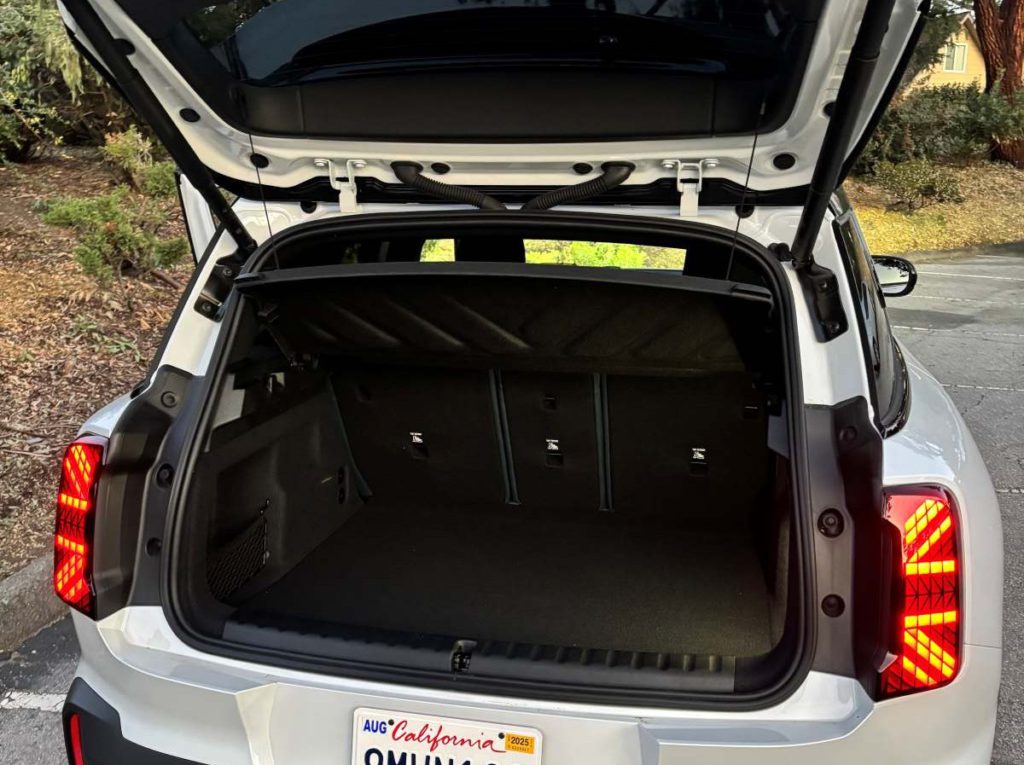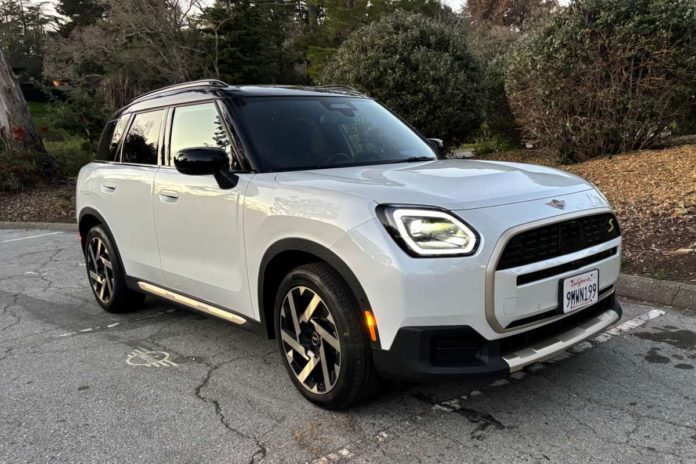BMW’s Mini division has been playing with electric vehicles for some time, but I think they have finally got it right with the Countryman SE ALL4 I recently tested.
To fill in the history—it started back at the 2008 LA Auto Show with the Mini-E, the first foray into modern electrics for the BMW group. The 500 Mini-Es were popular with the testers who leased them (none were sold). The next iteration was the BMW Active-E (a modified 2-Series), which was followed by the quite different-looking production version—the BMW i3.
Mini didn’t get an electric car of its own until the SE showed up in 2020. The first generation SE was small and had a limited range (EPA estimated at 144 miles), which meant the car was primarily viewed as a city car.
Finally, Mini presented the Countryman SE EV starting last year. Based on the BMW X1 platform, it’s still small by American standards, but that’s not a bad thing. The ride is a bit higher than the classic Mini, but it will seat four comfortably and/or haul a substantial amount of cargo. The Countryman brings along all-wheel drive, which combined with several hundred pounds of batteries under the floor and expected tight Mini steering, delivers a fun-to-drive EV with more than a little practicality.
The Power
With the Countryman EV, Mini has staked out a corner of the auto market where no one else in the U.S. market really competes. The dual electric motors put out the equivalent of 308 horsepower and 364 foot-pounds of torque, all delivered at the low-end where it can do the most good. That’s more horsepower than all but the gas John Cooper Works (JCW) models, but you’re also carrying about 750 pounds of extra weight from the 66.5 kWh of batteries.

Underneath the Countryman is a single-joint front axle and multi-link rear suspension. Add front and rear anti-roll bars and you’ve got a silent runner that is fit to take on local hills and canyon roads. Or you can apply that power to towing a small trailer (up to 2,645 pounds). A trailer hitch is standard. It’s also got roof rails if you want to add on a roof-top carrier.
While hard driving will reduce the range somewhat, the EPA tested numbers say the Countryman EV will go more than 204 miles. It’s also capable of charging at up to 130 kW DC fast chargers, which will take it from 10% to 80% state of charge in less than half an hour.
Inside: Still Quirky Mini
From the driver’s seat, like all Minis of recent vintage, the dominant feature is the round 9.4-inch diameter screen. Mini lets you wirelessly use your phone and let Apple CarPlay or Android Auto take over the screen. The audio system in our tester was a Harmon Kardon surround sound with 100 watts of power and six speakers, part of a pricey option package that included JCW sport seats and slick 19-inch wheels.
The Mini has a full complement of standard and optional technology. Notable is an Active Driving Assistant Pro that takes the adaptive cruise control up a notch. Ten airbags in a car this size is reassuring if you feel overmatched by some of the monster trucks roaming the highways.
Finally, there’s the cost. Like all EVs, it’s pricey compared to similar gas models, but home charging and minimal maintenance should mitigate some of that. Countryman EVs start at $38,900, but the SE ALL4 model we tested started at $45,200 and was $51,145 with $4,750 in options and a $995 destination charge.
The good news is Mini dealers are running lease and purchase options that mitigate some costs for what they qualify as “current inventory unaffected by tariffs.” (The Mini Countryman is manufactured in Germany.) Local dealers were offering lease deals and/or discounted financing when we checked, so if you’re interested in an electric Mini, it’s worth checking now to avoid tariff price hikes or the expiration of the federal EV tax credit.




